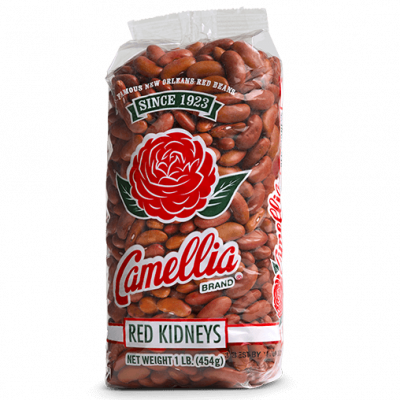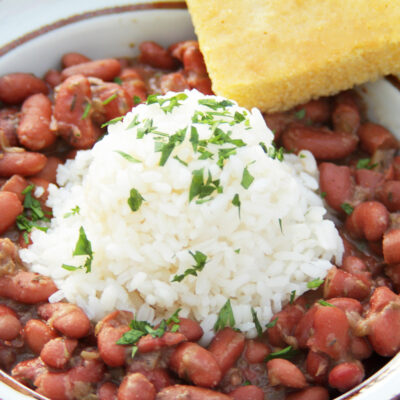Red Bean Essentials: Tasso Adds Smoky Cajun Flavor

The south Louisiana specialty meat tasso resembles ham or pancetta and is a lean cut of pork that’s cured, spiced and smoked for hours to create the finished product. Although tasso can be eaten by itself, its ultimate purpose is to help season a wide variety of Cajun and Creole dishes, including red beans and rice.
Tasso (pronounced “TAH-so”) is a perfect seasoning for slow-cooked beans of all kinds, including red, black, blackeyes, butter, cannellini, navy, and Great Northerns. A little tasso goes a long way, but liberal amounts can’t hurt a dish, either.
Add Tasso to Your Trinity
When making traditional Louisiana-style red beans, start by combining tasso with the “holy trinity” of onion, celery, and bell pepper. Tasso takes the place of — or can be used in conjunction with — other seasoned meats used to sauté the trinity, such as ham hocks or bacon, infusing the base with a smoky, spicy flavor.
Tasso also complements gumbo, étouffées, soups, jambalaya, shrimp and grits, vegetables such as collard greens and Brussels Sprouts, casseroles, and pastas, especially for carbonara and cream sauces. Some food lovers like tasso as a pizza topping, while others eat it plain or on sandwiches.
Make Your Own Tasso (Or Buy It)
Home cooks can find lots recipes for making their own tasso. The preferred cut of meat is from the pig’s shoulder. Although sometimes described as “pork butt,” it’s actually not from the swine’s nether regions. The meat is cut into long strips, almost like a hearty beef jerky, before it’s seasoned and smoked.
Spices used to season the pork vary according to individual recipes but can include salt, black pepper, cayenne pepper, garlic, sugar, hot sauce, mustard, paprika, cinnamon, vinegar, and/or Worcestershire sauce. Fire up your home smoker with pecan, hickory, or oak wood, and smoke the meat for at least a couple of hours.
If you’re not up to the task of making your own tasso, commercial versions from companies like Poche’s, Richard’s, and Savoie’s are available in grocery stores, not to mention the mom-and-pop meat markets and butcher shops that dot much of Louisiana.
Rooted in the Rich Cajun Boucherie Tradition

Tasso came about during Louisiana’s pre-refrigeration age, when every bit of a slaughtered pig was turned into something edible, whether andouille, boudin, cracklings (aka gratons), patés, sausages, pork rib stews, or other delicacies. Even organ meat was used to make the local terrine known as hogshead cheese.
Cajuns perfected their charcuterie skills thanks in part to the presence of early German settlers who lived alongside them in Louisiana’s swamps, prairies, and riverside settlements. The all-day Cajun hog-butchering party known as the boucherie is fondly recalled as a fun-filled but labor-intensive community affair by many older Cajuns — a tradition that is rapidly disappearing because of the preponderance of refrigeration and the industrialization of food production.
Popularized by Trailblazing Chef Paul Prudhomme
Although Germans influenced Acadiana’s sausage-making traditions, so too did other cultures. The word “tasso” itself is derived from the Spanish word “tasajo,” for dried, smoked beef. Scholars point out that Spanish colonists lived near New Iberia, La., in the 18th century, and there were meat-smoking practices among Native Americans in the area.
Curiously, tasso was largely unknown in New Orleans until famed Cajun chef Paul Prudhomme introduced it there as a key component in his recipes. Despite its resurgence, tasso is one of America’s “delicious and distinctive foods facing extinction,” Slow Food USA has written in including it in its Ark of Taste. “By identifying and championing these foods, we keep them in production and on our plate.”

Tasso is a win-win ingredient for your New Orleans-Style Red Beans & Rice and other dishes. You can’t beat the flavor, and you’re tapping into one of America’s unique culinary traditions, rooted in the rich culture of Cajun Louisiana.

